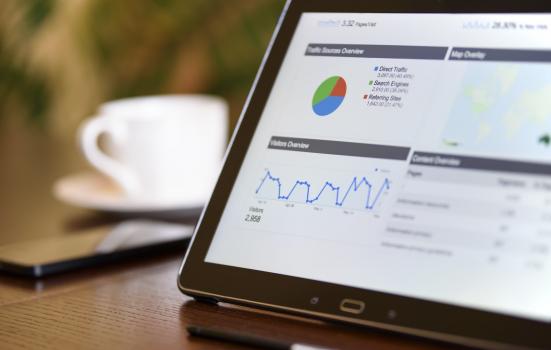Too many arts and cultural workers are wasting time wading through Google Analytics data. Sara Lock shares some tips on how to be more focused.

Photo Mix (CC0 License)
Work in the arts and cultural sector is busy. One of the things I hear repeatedly is the need for more time and resources. Google Analytics plays on the minds of many a marketer and I often hear people sheepishly confess to not using it as much as they should. So when I heard Devon Smith say that we should stop visiting Google Analytics so much, that captured my attention.
Strip away any visitors that aren’t relevant to your question, then dive into the details on the small number of visitors that remain
Devon is the co-founder of Measure Creative, a two-person digital studio in Oregon in the US. She was previously Director of Analytics at Threespot, with a portfolio of clients including the Bill and Melinda Gates Foundation and the Smithsonian. In short, she knows her stuff, so I wanted to find out more about her approach to Google Analytics.
List specific questions
A lack of time for Google Analytics is often compounded by the volume of information you’re confronted with when you log in. The richness of numbers, graphs, segments, filters and reports can feel overwhelming and you could easily lose a day in there, excited by all the things you could potentially find out.
Devon’s first piece of advice was to generate a list of questions you want to answer or hypotheses you want to test before you even log in. It keeps you focused as you navigate through the mass of data. Your questions should be relevant to your organisation and current priorities or problems. They might be around your objectives, a problem you’re trying to solve, or a commonly held belief in your organisation that you want to confirm or refute.
Here are some questions you might ask relating to your data:
- What percentage of my website visitors are coming from within or around my city? For everyone else, do the pages they’re looking at tell me anything about why they’re on my site?
- Do most people enter my website via the homepage or are there other key landing pages that introduce users to my organisation?
- How could I make the content people are searching for on my website more prominent or create new content to fulfil those search requests?
Focus on certain visitors
Strip away any visitors that aren’t relevant to your question, then dive into the details on the small number of visitors that remain. You can do this by creating Advanced Segments. Think about who you want to learn more about. These could be visitors from social media who also bought a ticket, those who look at a performance page but don’t purchase a ticket, and those who read a certain category of blog posts.
Reports and custom alerts
Reports and custom alerts are useful for sharing information across the wider team and limiting the number of times you have to log in.
Schedule a report to be emailed to yourself or other team members. You could send your fundraising manager the geographic breakdown of everyone who visits your donation page on a monthly basis. Or perhaps your education manager would like to see the top ten education resources downloaded from your site each week. Invest time in setting up reports and save yourself time in the long term.
Schedule a custom alert to be emailed to you if an event happens. You might want a heads-up if your local newspaper starts sending traffic to your website or if your traffic increases by 20% relative to yesterday. Custom alerts enable you to track specific events without logging in every day.
Add insights
Devon likens Google Analytics to a refrigerator. It stores all the data for you but you still need a human to pick a recipe, select the right ingredients, put them together and deliver the final dish.
A rough rule of thumb is to divide your time up as follows:
- 10% on planning – thinking about your questions and any data you might need to add to Google Analytics to answer those questions.
- 40% diving into the data, configuring reports, creating advanced segments, applying filters and such.
- 40% analysing the data to identify trends, picking out the bits that are useful, determining what to do next and packaging the findings in a way that’s meaningful to other people.
- 10% discussing the findings and recommendations with other people.
It’s easy to get consumed with all of the interesting things that you’re finding. Stay focused, think about what you can do with the data and share the most relevant information with your colleagues. It will reduce the amount of time you need to spend on Google Analytics and help you achieve better results from your website and for your organisation.
If you’re not yet using Google Analytics, this is more a point of reassurance than literal advice. Google Analytics doesn’t have to be an onerous task and findings needn’t sit solely within the marketing team. There’s valuable data that could be applied to fundraising, programming and other aspects of your organisation’s work.
Sara Lock is Associate Editor at the AMA.
www.a-m-a.co.uk
This article is inspired by Devon Smith’s AMA conference session and her guide that is available to read on CultureHive.




